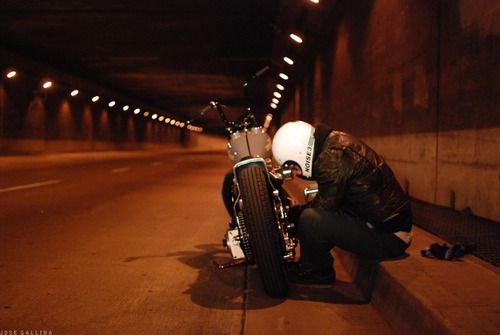Riding a motorcycle has always been an exhilarating experience—one that blends freedom with adrenaline. But as we move further into 2025, the excitement of the open road is being overshadowed by a growing concern: motorcycle accidents are on the rise. Despite technological advancements in safety gear and stricter traffic laws, the numbers continue to climb. What’s behind this alarming trend? And more importantly, how can riders stay safe while enjoying their two-wheeled passion?
This year, new road safety data has shed light on the factors contributing to the increase in crashes. From distracted drivers to faulty motorcycle parts, the reasons are varied—but they all lead to the same outcome: more injuries, more fatalities, and more riders facing the dangers of modern roads.
The Data Doesn’t Lie: Motorcycle Accidents Are Surging in 2025
A closer look at this year’s statistics paints a worrisome picture. Reports from major traffic safety organizations reveal a significant increase in motorcycle-related crashes, particularly in urban areas where traffic congestion has worsened. Compared to previous years, fatalities have seen an upward spike, with many accidents being attributed to:
- Distracted driving: The rise of smartphones and in-car entertainment systems has led to more distracted drivers than ever before.
- Reckless riding: Not all blame falls on other drivers—some motorcyclists take unnecessary risks, ignoring traffic laws and riding at dangerous speeds.
- Poor road conditions: Potholes, uneven pavement, and unexpected obstacles make riding riskier, especially in high-traffic areas.
- Faulty or worn-out motorcycle parts: Brakes failing at the wrong time, a sudden tire blowout, or a malfunctioning headlight can turn a simple ride into a fatal accident.
With the increase in urbanization and the growing number of vehicles on the road, these risks are becoming unavoidable. But are these the only reasons accidents are increasing?
The Role of Distracted Drivers: A Silent Threat to Motorcyclists
A decade ago, drunk driving was the biggest threat to motorcyclists. Today, it’s distractions. Drivers are more distracted now than ever before, and that spells danger for riders who rely on visibility and quick reflexes to stay safe.
Despite laws against texting while driving, the reality is that many motorists still glance at their phones, take video calls, or even scroll through social media at red lights. The problem? A momentary distraction is all it takes for a driver to miss a motorcyclist in their blind spot or fail to react in time at an intersection.
Lane splitting, an advantage motorcycles have in traffic, has also become more dangerous because of distracted drivers. When a motorist suddenly drifts into another lane without looking, the motorcyclist riding alongside them is left with no time to react.
Speeding: A Problem for Riders and Drivers Alike
Speeding isn’t a new issue, but it’s a major factor in the rising number of motorcycle crashes. Riders who love the thrill of speed sometimes push their limits too far, taking corners too aggressively or failing to judge the stopping distance.
On the flip side, reckless car drivers who treat roads like racetracks often fail to recognize how quickly a motorcycle can appear in their path. High-speed collisions are among the deadliest for motorcyclists, as the lack of a protective cage around them means even a minor crash can turn fatal.
Poor Road Conditions: A Hidden Danger
Not all accidents happen because of bad driving or risky riding. In many cases, the real danger lies in the condition of the roads themselves.
A car can absorb the impact of a pothole with little consequence, but for a motorcycle, a deep pothole or a patch of loose gravel can send the rider flying. Road construction, oil spills, and unexpected debris make navigating the streets even riskier.
With more vehicles on the road in 2025, city infrastructure is struggling to keep up. Road maintenance isn’t always a priority, and motorcyclists are paying the price.
Motorcycle Parts and Maintenance: Why Your Bike’s Condition Matters
One of the most overlooked causes of motorcycle accidents is faulty motorcycle parts. Many riders put their trust in their bikes without realizing that a worn-out tire, weak brakes, or a failing suspension system can be the difference between a close call and a serious accident.
Routine maintenance is critical. Every rider should regularly check:
- Tires: Ensure proper inflation and check for any signs of wear or damage.
- Brakes: Test both front and rear brakes for responsiveness.
- Lights and signals: Make sure they’re fully functional, especially for night riding.
- Chain and sprockets: Loose chains or worn-out sprockets can lead to sudden failures at high speeds.
Investing in high-quality motorcycle parts isn’t just about improving performance—it’s about ensuring safety. If any part of your bike isn’t functioning properly, replacing it before an issue arises could save your life.
🔗 Find high-quality motorcycle parts here.
How Riders Can Protect Themselves on the Road
With the increase in motorcycle accidents, riders need to be more vigilant than ever. The best way to avoid becoming a statistic is through smart riding habits and proactive safety measures.
- Wear proper gear: Helmets, gloves, armored jackets, and riding boots aren’t just accessories—they’re lifesavers.
- Stay visible: Bright clothing and reflective gear can help ensure other drivers see you, especially at night.
- Ride defensively: Assume that other drivers don’t see you and always be prepared to react.
- Obey traffic laws: Speed limits, lane discipline, and road signs exist for a reason—ignoring them increases your risk.
While these steps don’t eliminate the dangers completely, they significantly reduce the chances of getting into a crash.
The Future of Motorcycle Safety: Will Things Get Better?
With motorcycle accidents increasing, many wonder if the situation will improve in the coming years. The good news is that technology is advancing, and more innovations are being introduced to enhance rider safety.
Motorcycle manufacturers are developing smarter helmets with built-in HUD displays, anti-lock braking systems (ABS) are becoming standard, and self-balancing bikes are no longer just a concept. These advancements could make riding safer, but the biggest responsibility still lies with the riders themselves.
Governments are also taking action by pushing for stricter enforcement of traffic laws and improving road infrastructure. But as long as drivers remain distracted and road conditions continue to deteriorate, motorcyclists will need to take their own safety seriously.
Final Thoughts: The Road Ahead for Motorcyclists
The rising number of motorcycle accidents in 2025 is a wake-up call for riders and drivers alike. The thrill of riding should never come at the cost of safety, and every motorcyclist has a responsibility to take precautions before hitting the road.
By maintaining your bike, staying alert, and making smart riding decisions, you can significantly lower your chances of becoming part of this year’s statistics.
And if your motorcycle needs a tune-up, don’t take chances with low-quality components. Get the best motorcycle parts to keep your ride in top condition.
🔗 Check out top-tier motorcycle parts here.
Because at the end of the day, the only thing better than the freedom of the open road is making it home safely.



















